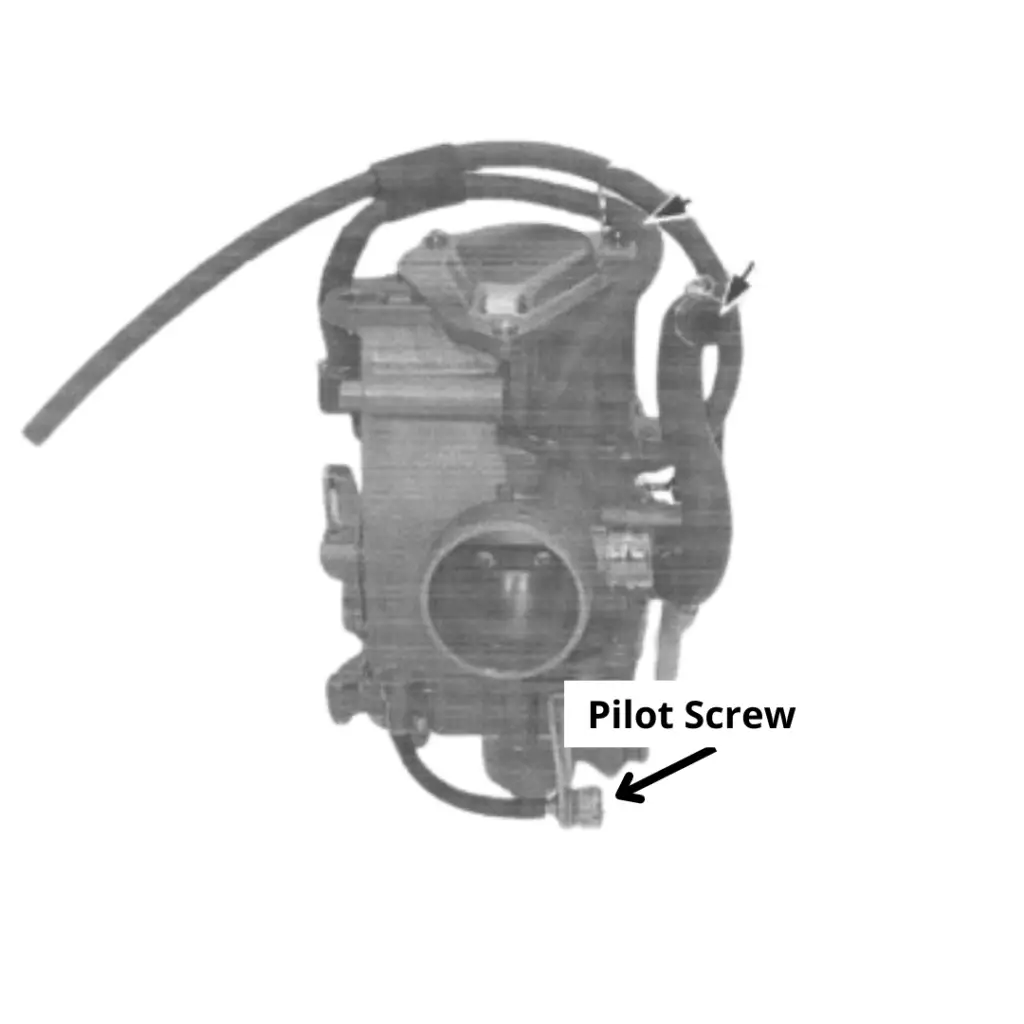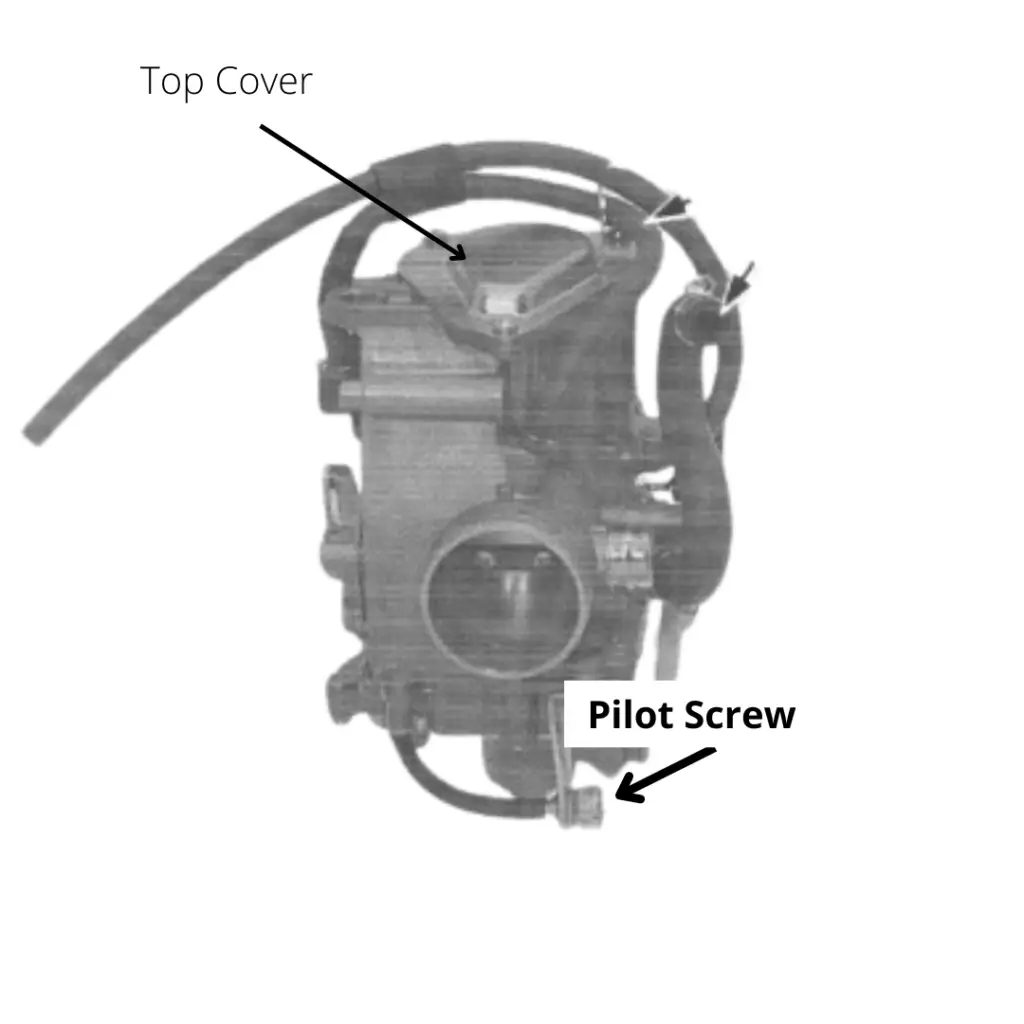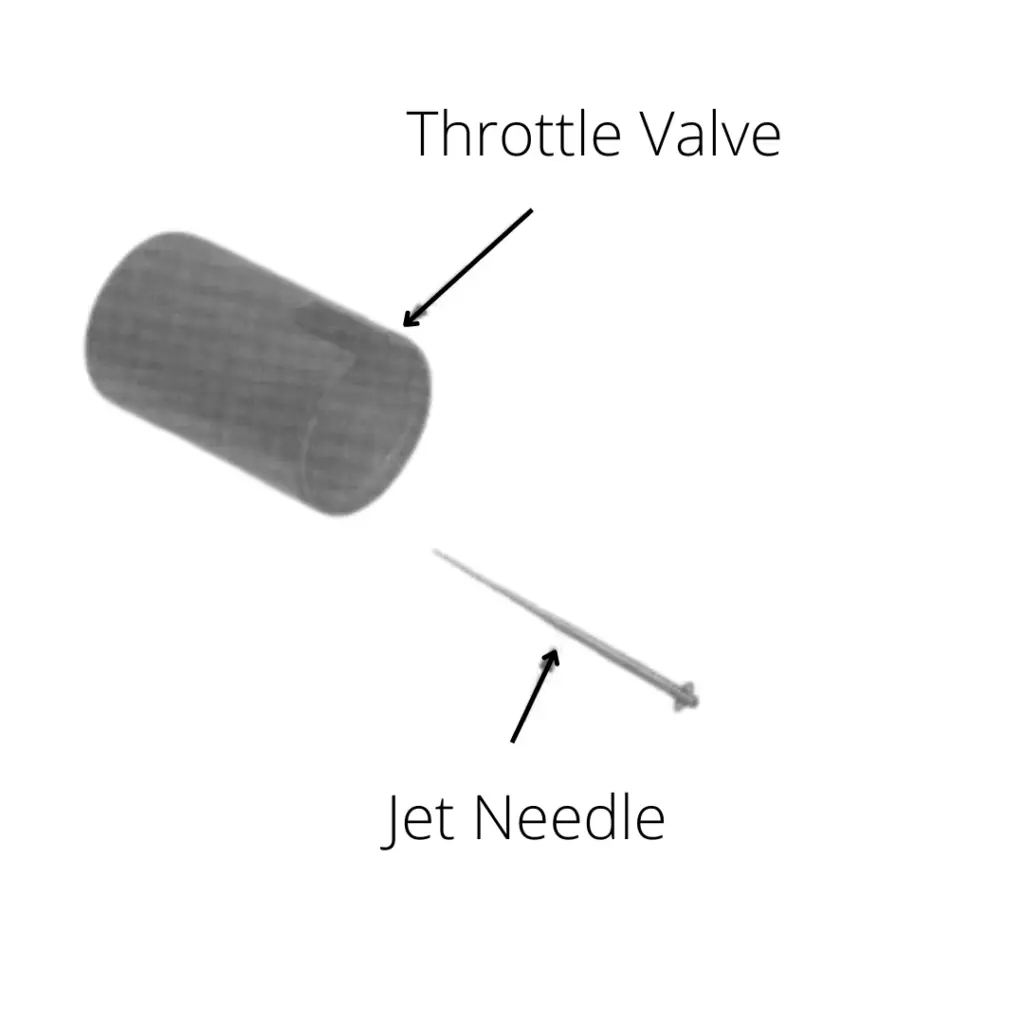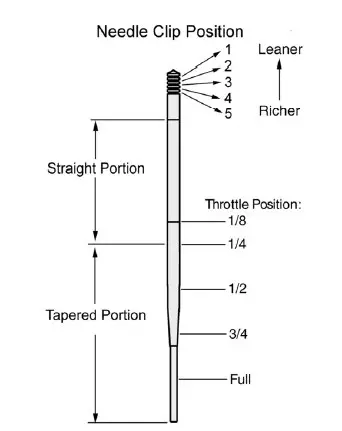Honda 400EX Carburetor Adjustment – Complete Guide
Engine bogging or sputtering at idle? Or dying out as you increase throttle? Some simple adjustments can fix your problems. You do not necessarily need to completely disassemble and clean the carb (Although, regular cleaning of carburetors is a good practice)
The pilot screw (aka throttle stop screw) is the easiest to adjust, it is located at the bottom of the carburetor. Turning the pilot screw clockwise will increase the idle speed and turning it anti-clockwise will decrease the idle speed.
In case your engine isn’t running smoothly when the throttle is partially open (1/4th to 3/4th), you will need to adjust the jet needle. I will go through that process in more detail later.
Adjusting the pilot screw
Out of the factory, the pilot screw is set perfectly and no adjustments are needed, you’ll likely only need to adjust it if you’re going to ride your ATV in high altitude region, have replaced the screw previously or you’ve made modifications to the engine.
Here’s the step by step process of adjusting the pilot screw –
Note: Using a tachometer can improve how well the adjustments are made, but I’ll assume you don’t have one.
- Warm up the engine, turn off the choke and keep your engine running while you adjust the screw.
- Turn the screw clockwise till the screw is lightly seated.
- Turn your screw out (counter-clockwise) by 2 and a 1/2 turns.
- Turn the screw in or out slightly untill you find the maximum RPM.
- Once you have the max RPM, slightly turn the screw in (if you measure it with a tachometer, the rpm drop from max should be 50rpm)
- Now turn the screw counter-clockwise 1 turn for one final time.

If your engine is not idling, even if the parts are all OEM, it is likely that the pilot jet inside the carburetor is clogged up. In such cases, some minor adjustments to the pilot screw may help, but it will be a better option to take apart the carburetor and clean all the jets.
Note – Pilot jet and Pilot screw are not the same thing. Jet refers to the small screws inside the carburetor that have holes in them, the holes allow the fuel to flow from bowl to the venturi. The Pilot screw on the other hand is accessible from outside the carburator.
Adjusting the Needle
If your engine is not functioning properly between 1/4th and 3/4th throttle, a small adjustment in the jet needle can fix the issue.The needle is inside the throttle valve, which is beneath the top cover.

You will be able to spot the throttle valve once you open up the Top Cover.
The top cover consist of 3 screws, when you take them off, you’ll find a screw and a washer holding on to the throttle valve.
Disassembling the whole system isn’t very straight forward. You can refer to the repair manual for Honda 400ex or find a youtube tutorial.

Once you have the throttle valve out, remove the needle from the valve.

Once the needle is out of the valve, you’ll find a clip and several slots for the clip (at the top of the needle), as shown in the diagram.
Moving the clip down will richen the air-fuel mixture (when your throttle is 1/4th to 3/4 open) and moving it up will make the mix lean.
Follow these steps for proper adjustment –
- Note the original position of the clip (Usually it is the 3rd from top on the 400ex)
- Move the clip one down, if your engine is running lean, move it one up if your engine is running rich.
- Try out different slots, and stick with the slot that works best for your engine.
Cleaning the Carburetor & New Jets
If your engine is running lean or rich at full throttle, it is lkely due to the main jet getting clogged or the jet size not being able to keep up with your mods, or the jet could be too big if you’re driving in a high altitude region (with less air available).
If you have made no mods at all, then cleaning your carburetor will solve your issues in most cases (on some occasions the float may not be seated well, or the carburetor might be missing pieces, so make sure to assemble the whole system to be exactly the way it is suppose to be).
Cleaning the carburetor requires you to get the carburetor out of the engine, which can be a difficult task if this is you’re not very experienced maintainance and repair. You can refer to youtube or manuals for explainations.
But once you get all the pieces out, you simply have to blow all the holes/passages with a carburetor cleaner.
Replacing jets can also be a solution, specially in higher altitude or modified engines. The sizing of the jet will decide how much fuel is getting sucked into the venturi, so if your engine is taking more air in than normal, you’ll need bigger jets that can supply it with more fuel, and vice versa.
